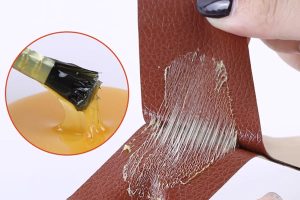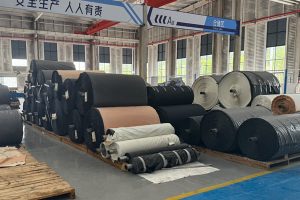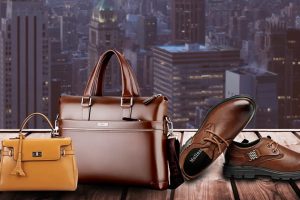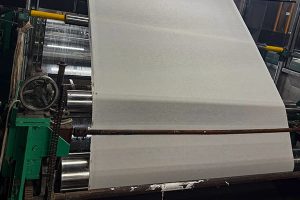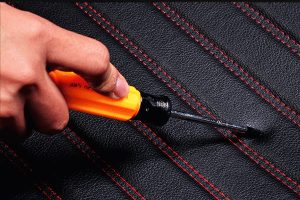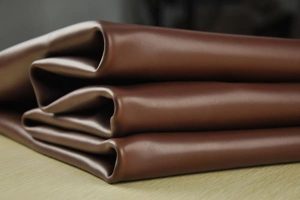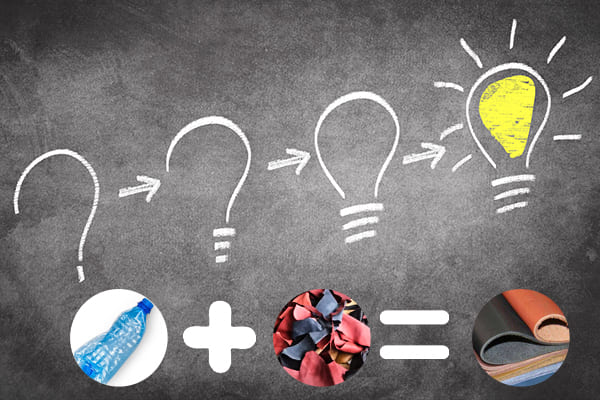
Who knew that your next handbag or sofa could have once been destined for the trash heap? That’s right—what was once a pile of discarded leather offcuts is now the latest darling of eco-conscious fashionistas. Welcome to the world of recycled leather, where waste meets wonder, and leather gets a second chance at life! It’s the material makeover we never saw coming, transforming what we usually toss out into something we proudly wear, sit on, and admire. If you’re ready to discover how recycled leather is turning the fashion industry upside down (in the best possible way), buckle up for an eco-friendly adventure that’s all about making style sustainable.
Recycled Leather Unveiled: The Future of Ethical Fashion
As the fashion industry increasingly prioritizes sustainability, recycled leather has emerged as a cornerstone of ethical fashion. Traditional leather production has long been criticized for its significant environmental and ethical impacts, including deforestation, water pollution, and animal welfare concerns. By using recycled leather, fashion brands can drastically reduce their ecological footprint. This material allows designers to create luxurious products without the need for new raw materials, aligning with the growing demand for ethical consumption. Fashion-forward consumers are embracing recycled leather as a way to stay stylish while supporting responsible production practices. It represents a shift towards a more conscientious industry where sustainability and style go hand-in-hand.
How Leather Waste Gets a Second Life: The Recycled Revolution
Recycling leather is a revolution in waste management, turning discarded materials into valuable resources. The leather industry generates significant waste, from trimmings to defective hides, which traditionally would end up in landfills. With the rise of recycling initiatives, these materials are now collected and re-engineered into recycled leather. The process involves grinding leather scraps into fine fibers, then combining them with natural or synthetic binders to form a new material. This approach conserves resources, reduces the environmental impact of leather production, and promotes a circular economy, where waste is minimized, and products have extended life cycles. The recycled leather revolution is not only about creating a sustainable product but also about transforming how industries manage waste, proving that eco-friendly alternatives can be just as functional and beautiful as their conventional counterparts.
Redefining Leather: An Introduction to the Recycled Version
Recycled leather challenges our traditional understanding of leather by redefining the material’s production process. It combines the qualities that people love about real leather—its durability, texture, and classic aesthetic—with the benefits of sustainability. Unlike synthetic leather, which is often made from petroleum-based products, recycled leather is rooted in natural materials. It not only reduces the demand for new animal hides but also minimizes the use of chemicals, water, and energy associated with tanning processes. Recycled leather offers a responsible alternative to those who appreciate leather but are conscious of its environmental and ethical implications. It serves as an innovative solution in material science that merges fashion, function, and sustainability, providing consumers with a choice that reflects their values.
From Waste to Wonder: Understanding Recycled Leather
Recycled leather starts its journey as waste, sourced from various leather industries, including fashion, furniture, and automotive sectors. These leftover materials are given a second life through a transformation process that turns what would otherwise be discarded into a new, functional product. The manufacturing process of recycled leather is a combination of traditional craftsmanship and modern technology, breaking down leather scraps into fibers, which are then reconstituted with other materials to create a durable, versatile alternative to virgin leather. This innovative method allows recycled leather to retain many of the characteristics that make traditional leather appealing, such as its texture and resilience, while reducing the environmental burden caused by leather production. The ability to turn waste into something valuable exemplifies the potential of recycled leather as a forward-thinking material for modern industries.
Sustainability in Style: What You Should Know About Recycled Leather
Recycled leather offers a stylish yet sustainable solution to the environmental challenges posed by conventional leather production. Unlike synthetic leather, which often relies on petroleum-based products, recycled leather is a more natural and eco-friendly choice. By repurposing leather scraps, the need for fresh animal hides is reduced, and the harmful impacts associated with cattle farming, such as deforestation and greenhouse gas emissions, are minimized. Furthermore, the recycled leather process requires less water and fewer chemicals than traditional tanning methods, making it a more sustainable option overall. Consumers looking for ethical and environmentally friendly fashion or furniture choices can turn to recycled leather for products that don’t compromise on style, while contributing to a healthier planet. As more industries adopt this material, it paves the way for a more responsible, conscious approach to production.
The Eco-Friendly Alternative: A Closer Look at Recycled Leather
Recycled leather is quickly becoming the go-to eco-friendly alternative in the world of materials. The appeal lies in its ability to combine the luxurious feel and durability of traditional leather with a significantly lower environmental footprint. The production process of recycled leather eliminates the need for extensive animal farming and chemical-heavy tanning processes, which are known for their high resource consumption and pollution. Instead, recycled leather uses materials that would have otherwise ended up in landfills, turning them into high-quality products that can be used in everything from fashion accessories to automotive interiors. This not only helps reduce waste but also conserves valuable natural resources, such as water and energy. With sustainability at the forefront of consumer preferences, recycled leather offers a guilt-free alternative that maintains both aesthetic appeal and functional performance. It represents a step forward for industries looking to reduce their environmental impact while continuing to meet consumer demand for quality and design.
Conclusion: Leather’s Second Act—A Sustainable Star is Born
In a world where every choice matters, recycled leather proves that luxury and sustainability can not only coexist but thrive together. By taking waste and transforming it into a stylish, durable material, recycled leather allows us to redefine what it means to be fashionable—and responsible. From reducing our environmental impact to supporting a circular economy, this innovative material offers a future where ethical choices are no longer the exception but the rule. So, next time you’re eyeing that sleek handbag or chic sofa, remember: it’s more than just leather—it’s a revolution in waste, a champion for sustainability, and a testament to the power of giving materials a second life. After all, who says eco-friendly can’t also be fabulous?


